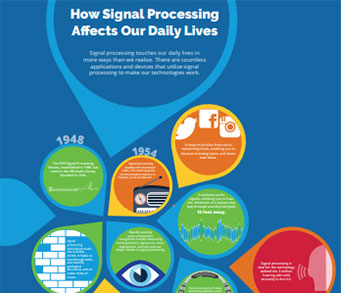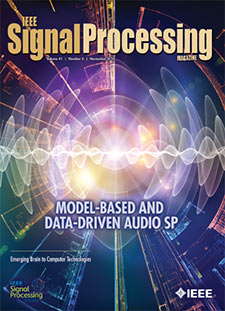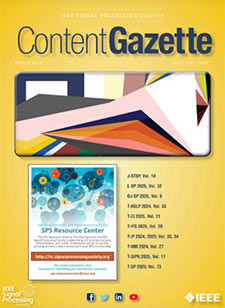- Our Story
- Publications & Resources
- Publications & Resources
- Publications
- IEEE Signal Processing Magazine
- IEEE Journal of Selected Topics in Signal Processing
- IEEE Signal Processing Letters
- IEEE Transactions on Computational Imaging
- IEEE Transactions on Image Processing
- IEEE Transactions on Information Forensics and Security
- IEEE Transactions on Multimedia
- IEEE Transactions on Signal and Information Processing over Networks
- IEEE Transactions on Signal Processing
- IEEE TCI
- IEEE TSIPN
- Data & Challenges
- Submit Manuscript
- Guidelines
- Information for Authors
- Special Issue Deadlines
- Overview Articles
- Top Accessed Articles
- SPS Newsletter
- SigPort
- SPS Resource Center
- Publications FAQ
- Blog
- News
- Dataset Papers
- Conferences & Events
- Community & Involvement
- Professional Development
- For Volunteers
- Information for Authors-OJSP
-
Home
Conferences Events IEEE Signal Processing Magazine IEEE SPL Article IEEE TIFS Article IEEE TMM Article IEEE TSP Article Jobs in Signal Processing Lectures Machine Learning Seasonal Schools Signal Processing News SPM Article SPS Distinguished Lectures SPS Newsletter Article SPS Webinar SPS Webinars SPS Webinar Series Webinar webinars
-
Our Story
What is Signal Processing?

The technology we use, and even rely on, in our everyday lives –computers, radios, video, cell phones – is enabled by signal processing. Learn More » -
Publications & Resources
-
SPS Resources
- Signal Processing Magazine The premier publication of the society.
- SPS Newsletter Monthly updates in Signal Processing
- SPS Resource Center Online library of tutorials, lectures, and presentations.
- SigPort Online repository for reports, papers, and more.
- SPS Feed The latest news, events, and more from the world of Signal Processing.
-
SPS Resources
-
Conferences & Events
-
Community & Involvement
-
Membership
- Join SPS The IEEE Signal Processing Magazine, Conference, Discounts, Awards, Collaborations, and more!
- Chapter Locator Find your local chapter and connect with fellow industry professionals, academics and students
- Women in Signal Processing Networking and engagement opportunities for women across signal processing disciplines
- Students Scholarships, conference discounts, travel grants, SP Cup, VIP Cup, 5-MICC
- Young Professionals Career development opportunities, networking
- Get Involved
-
Technical Committees
- Applied Signal Processing Systems
- Audio and Acoustic Signal Processing
- Bio Imaging and Signal Processing
- Computational Imaging
- Image Video and Multidimensional Signal Processing
- Information Forensics and Security
- Machine Learning for Signal Processing
- Multimedia Signal Processing
- Sensor Array and Multichannel
- Signal Processing for Communication and Networking
- Signal Processing Theory and Methods
- Speech and Language Processing
- Technical Working Groups
- More TC Resources
-
Membership
-
Professional Development
-
Professional Development
- Signal Processing Mentorship Academy (SigMA) Program
- Micro Mentoring Experience Program (MiME)
- Distinguished Lecturer Program
- Distinguished Lecturers
- Distinguished Lecturer Nominations
- Past Lecturers
- Distinguished Industry Speaker Program
- Distinguished Industry Speakers
- Distinguished Industry Speaker Nominations
- Industry Resources
- IEEE Training Materials
- Jobs in Signal Processing: IEEE Job Site
-
Career Resources
- SPS Education Program Educational content in signal processing and related fields.
- Distinguished Lecturer Program Chapters have access to educators and authors in the fields of Signal Processing
- Job Opportunities Signal Processing and Technical Committee specific job opportunities
- Job Submission Form Employers may submit opportunities in the area of Signal Processing.
-
Professional Development
-
For Volunteers
-
For Board & Committee Members
- Board Agenda/Minutes* Agendas, minutes and supporting documentation for Board and Committee Members
- SPS Directory* Directory of volunteers, society and division directory for Board and Committee Members.
- Membership Development Reports* Insight into the Society’s month-over-month and year-over-year growths and declines for Board and Committee Members
-
For Board & Committee Members
Popular Pages
Today's:
- Information for Authors
- (ICME 2026) 2026 IEEE International Conference on Multimedia and Expo
- IEEE Transactions on Image Processing
- IEEE Transactions on Information Forensics and Security
- Submit a Manuscript
- IEEE Signal Processing Letters
- IEEE Transactions on Multimedia
- Conference Call for Papers
- Information for Authors-SPL
- (ICIP 2026) 2026 IEEE International Conference on Image Processing
- IEEE Transactions on Signal Processing
- Unified EDICS
- (ASRU 2025) 2025 IEEE Automatic Speech Recognition and Understanding Workshop
- (ICASSP 2026) 2026 IEEE International Conference on Acoustics, Speech, and Signal Processing
- IEEE Journal of Selected Topics in Signal Processing
All time:
- Information for Authors
- Submit a Manuscript
- IEEE Transactions on Image Processing
- IEEE Transactions on Information Forensics and Security
- IEEE Transactions on Multimedia
- IEEE Transactions on Audio, Speech and Language Processing
- IEEE Signal Processing Letters
- IEEE Transactions on Signal Processing
- Conferences & Events
- IEEE Journal of Selected Topics in Signal Processing
- Information for Authors-SPL
- Conference Call for Papers
- Signal Processing 101
- IEEE Signal Processing Magazine
- Guidelines
Last viewed:
- Chapters
- Community & Involvement
- Il N'y a ni Mauvaises Herbes ni Mauvais Hommes
- SPS Wins IEEE Educational Activities Board Society/Council Professional Development Award!
- Information for Authors
- IEEE Transactions on Image Processing
- Distinguished Industry Speakers
- Distinguished Lecturers
- (ICIP 2018) 2018 IEEE International Conference on Image Processing
- Member Highlight: Dr. Monika Aggarwal - Professor, IIT, Delhi, India
- (ASRU 2025) 2025 IEEE Automatic Speech Recognition and Understanding Workshop
- Call for Proposals: (SLT 2026) 2026 IEEE Workshop on Spoken Language Technology
- (ICME 2026) 2026 IEEE International Conference on Multimedia and Expo
- IEEE Signal Processing Letters
- A Message from the New Society President
Emil Björnson (KTH Royal Institute of Technology) "Multiantenna Cellular Communications: Channel Estimation, Feedback, and Resource Allocation" (2011)
You are here
Newsletter Menu
Newsletter Categories
Top Reasons to Join SPS Today!
1. IEEE Signal Processing Magazine
2. Signal Processing Digital Library*
3. Inside Signal Processing Newsletter
4. SPS Resource Center
5. Career advancement & recognition
6. Discounts on conferences and publications
7. Professional networking
8. Communities for students, young professionals, and women
9. Volunteer opportunities
10. Coming soon! PDH/CEU credits
Click here to learn more.
News and Resources for Members of the IEEE Signal Processing Society
Emil Björnson (KTH Royal Institute of Technology) "Multiantenna Cellular Communications: Channel Estimation, Feedback, and Resource Allocation" (2011)
Emil Björnson (KTH Royal Institute of Technology) "Multiantenna Cellular Communications: Channel Estimation, Feedback, and Resource Allocation", Advisors: Profs. Björn Ottersten and Mats Bengtsson (2011)
The use of multiple antennas at base stations and user devices is a key component in the design of cellular communication systems that can meet the capacity demands of tomorrow. The downlink transmission from base stations to users is particularly limiting, both from a theoretical and a practical perspective, since user devices should be simple and power-efficient, and because many applications primarily create downlink traffic (e.g., video streaming). The potential gain of employing multiple antennas for downlink transmission is well recognized: the total data throughput increases linearly with the number of transmit antennas if the spatial dimension is exploited for simultaneous transmission to multiple users. In the design of practical cellular systems, the actual benefit of multiuser multiantenna transmission is limited by a variety of factors, including acquisition and accuracy of channel information, transmit power, channel conditions, cell density, user mobility, computational complexity, and the level of cooperation between base stations in the transmission design.
The thesis considers three main components of downlink communications: 1) estimation of current channel conditions using training signaling; 2) efficient feedback of channel estimates; and 3) allocation of transmit resources (e.g., power, time and spatial dimensions) to users. In each area, the thesis seeks to provide a greater understanding of the interplay between different system properties. This is achieved by generalizing the underlying assumptions in prior work and providing both extensions of previous outcomes and entirely new mathematical results, along with supporting numerical examples. Some of the main thesis contributions can be summarized as follows: A framework is proposed for estimation of different channel quantities using a common optimized training sequence. Furthermore, it is proved that each user should only be allocated one data stream and utilize its antennas for receive combining and interference rejection, instead of using the antennas for reception of multiple data streams. This fundamental result is proved under both exact channel acquisition and under imperfections from channel estimation and limited feedback. This also has positive implications on the hardware and system design. Next, a general mathematical model is proposed for joint analysis of cellular systems with different levels of base station cooperation. The optimal multicell resource allocation can in general only be found with exponential computational complexity, but a systematic algorithm is proposed to find the optimal solution for the purpose of offline benchmarking. A parametrization of the optimal solution is also derived, creating a foundation for heuristic low-complexity algorithms that can provide close-to-optimal performance. This is exemplified by proposing centralized and distributed multicell transmission strategies and by evaluating these using multicell channel measurements.
For details, please access the full thesis or contact the author at emil.bjornson@ee.kth.se.
Open Calls
| Nomination/Position | Deadline |
|---|---|
| Call for Nominations: Awards Board, Industry Board and Nominations & Elections Committee | 19 September 2025 |
| Take Part in the 2025 Low-Resource Audio Codec (LRAC) Challenge | 1 October 2025 |
| Meet the 2025 Candidates: IEEE President-Elect | 1 October 2025 |
| Call for proposals: 2027 IEEE Conference on Artificial Intelligence (CAI) | 1 October 2025 |
| Call for Nominations for the SPS Chapter of the Year Award | 15 October 2025 |
| Call for Papers for 2026 LRAC Workshop | 22 October 2025 |
| Submit a Proposal for ICASSP 2030 | 31 October 2025 |
| Call for Project Proposals: IEEE SPS SigMA Program - Signal Processing Mentorship Academy | 2 November 2025 |
Society News
- Upcoming Distinguished Lectures – March 2011
- Nomination of IEEE Fellows Class of 2013
- 2011 Annual Reporting and Rebate Requirements
- Changes to the Geographic Unit Formation Petition Process
- Call for Nominations: Regional Directors-at-Large and Members-at-Large
- 2011 IEEE Signal Processing Society Awards Announced
- New Video Educates on Impact of IEEE Societies/Councils
- Upcoming Distinguished Lectures – February 2011
Conferences & Events
Research Opportunities
- ARI is looking for a Senior Research Fellow (Deadline: Mar. 11, 2012)
- ARI is looking for two Post-Doc Research Assistants (Deadline: March 11, 2012))
- SPS TC Jobs Marketplace
- Post-doctoral Scientist, Computational Imaging Theory, University of New Mexico
- Doctoral support in Signal and Image Processing, George Washington University
Publications News
New Books
Technical Committee News
Education & Resources
SPS Social Media
- IEEE SPS Facebook Page https://www.facebook.com/ieeeSPS
- IEEE SPS X Page https://x.com/IEEEsps
- IEEE SPS Instagram Page https://www.instagram.com/ieeesps/?hl=en
- IEEE SPS LinkedIn Page https://www.linkedin.com/company/ieeesps/
- IEEE SPS YouTube Channel https://www.youtube.com/ieeeSPS
Home | Sitemap | Contact | Accessibility | Nondiscrimination Policy | IEEE Ethics Reporting | IEEE Privacy Policy | Terms | Feedback
© Copyright 2025 IEEE - All rights reserved. Use of this website signifies your agreement to the IEEE Terms and Conditions.
A public charity, IEEE is the world's largest technical professional organization dedicated to advancing technology for the benefit of humanity.








